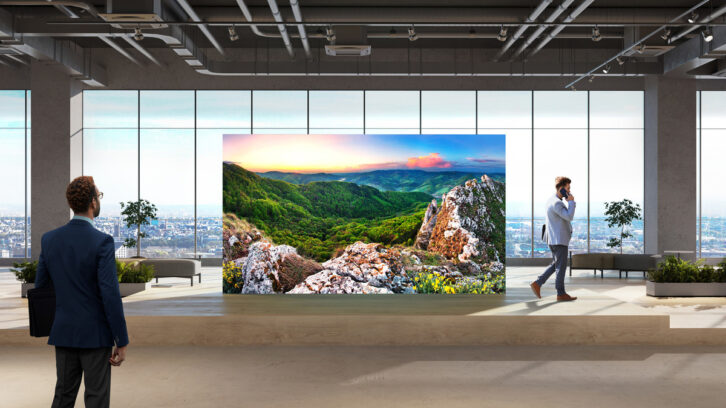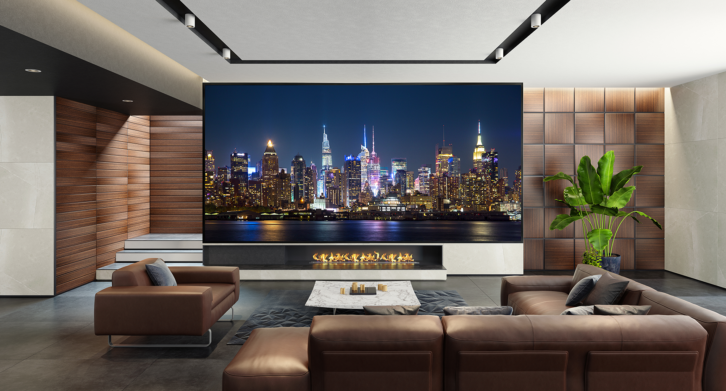What you need to know to get – and keep – the best performance possible.
Satisfying the Appetites of Power-Hungry dvLEDs
It takes a lot of electricity to sufficiently power an LED video wall, usually two or three dedicated 20-amp circuits. As is the case for any electrical circuit, noise and interference on the electrical grid can propagate onto incoming electrical lines and feed directly into connected AV components. Plagued by distorted artifacts and sine waves, this “dirty” electricity, as well as voltage fluctuations, can cause serious issues for or any AV device; for a sensitive, expensive visual showpiece like a video wall, the consequences can be dire. Images that were once crisp and bright look muted and muddy with poor contrast and definition. Plus, without proper power protection, the video wall’s internal power supplies can overheat and eventually fail. That’s a huge investment to leave prey to a problem that can be easily avoided.

“Even the best products on the planet won’t work as intended if you don’t properly manage the power coming into the environment,” says Terry Morton of Land & Sea Entertainment in San Diego. Who gets the bill when a video wall is damaged by an electrical event? You do! Plus, you will likely lose a customer and tarnish your reputation. Mitigating power issues is therefore one of the best business decisions you can make.
New Tech Week: Tech Showcase — Residential Systems Best of Show Winners at CEDIA Expo 2023
The Cure for the Common Electrical Ailments
Prevention is key when powering a dvLED video wall. The installation of a product that stops, buffers, and remediates all types of power anomalies — not just surges and spikes — before they reach the video wall is the best recourse. An isolation transformer addresses it all. It grabs electricity coming into the environment and cleans and conditions it, proactively managing and ensuring electrical current fed to the video wall and other devices is stable. Distorted and dirty power has no chance of compromising the video quality or damaging the circuitry, making an isolation transformer a wise investment for any video wall project, including your own showroom.
Automatic Adjustments of Incoming Power
Surges, spikes, artifacts, and distortion on the electrical line may be top of mind when considering power conditioning and protection, but fluctuations in voltage are also damaging to sensitive electronic equipment like video walls. When voltage goes outside the normal, safe range of 115-125 volts, an isolation transformer equipped with automatic voltage regulation adjusts the incoming voltage to an ideal level (120 volts ±4 volts) before feeding it to the connected equipment. In the case of extreme voltage fluctuations, an isolation transformer equipped with automatic voltage regulation takes drastic measures by shutting down the equipment until the voltage resumes normal operating parameters. Your integration team also receives an alert of the power disruption so you can react accordingly.

Specification Considerations and Installation Options
It’s important to understand the source of electricity, the supply voltage at the installation site, and the total amperage load of the video wall and other connected equipment before specifying a solution. Is power coming from the utility grid, solar panels, or both? Does the video wall location utilize standard 240 volts or three-phase, 208-volt power? What are the designs of the various power supplies in the AV equipment and what is the intended use of that equipment? After these parameters have been identified and a proper isolation transformer selected, the unit can be installed apart from the video wall along with the AV processors and source equipment in a dedicated closet or room. Alternatively, it can be located in a local equipment rack.
The Foundation of Your Success
You wouldn’t dream of installing an LED video wall without a robust cabling network. The same goes for power conditioning and protection. It’s vital to the performance of the display and the satisfaction of your customers. You can expect a much higher success rate and client acceptance by specifying a power solution with the network equipment at the start of a proposal.
New to advanced power systems? Torus Power has experts on hand to guide you through the process, ensuring that every video wall you install gets the clean, isolated power it needs to deliver the entertainment experiences your customers expect.
To learn more about power considerations and solutions and how Torus Power’s custom options can ensure better performance from LED video walls and other connected gear, email sales@toruspower.com.
